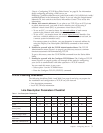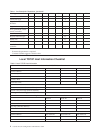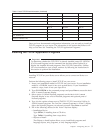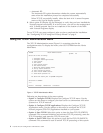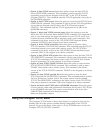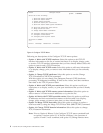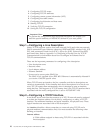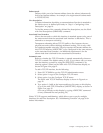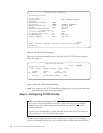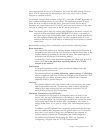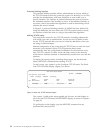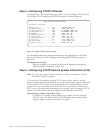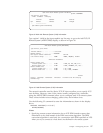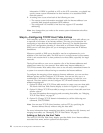Subnet mask
Defines which part of an Internet address forms the subnet (subnetwork)
field of an Internet address. An example of a single-network subnet mask
is: 255.255.255.128.
Line description
Contains information describing a communications line that is attached to
the iSeries server, as defined previously in “Step 1—Configuring a Line
Description” on page 10.
To find the names of the currently defined line descriptions, use the Work
with Line Descriptions (WRKLIND) command.
Associated local interface
Allows the network to which this interface is attached appear to be part of
the same network that the associated local interface is attached to. This is
referred to as transparent subnetting.
Transparent subnetting allows TCP/IP traffic to flow between the two
physical networks without defining additional routing. This is only valid
for broadcast-capable networks. This also requires the Internet address for
Add TCP/IP Interface (ADDTCPIFC) to be configured in the same network
as the associated local interface. An additional requirement is for the
subnet mask that is defined for the associated local interface.
Automatic start
Refers to whether the TCP/IP interface is started automatically whenever
TCP/IP is started. The default setting is *YES. If you choose *NO, you must
start the interface yourself by using the STRTCPIFC command or by
selecting option 9 (Start) on the Work with TCP/IP Interfaces display, as
shown in Figure 4 on page 12.
To add a TCP/IP interface, do the following:
1. Enter GO TCPADM to get the TCP/IP Administration menu.
2. Select option 1 to get to the Configure TCP/IP menu.
3. Select option 1 on the Configure TCP/IP menu.
The Work with TCP/IP Interfaces display is shown in Figure 4 on
page 12.
4. Type option 1 (Add) at the input-capable top list entry on this display
to go to the Add TCP/IP Interfaces (ADDTCPIFC) display, as shown in
Figure 3 on page 12.
(You can go directly to this display by typing ADDTCPIFC command
on any command line and pressing F4.)
iSeries TCP/IP supports multihoming, which allows you to specify multiple
interfaces for each line description. See “Multihoming Function” on page 56 for
further information.
Chapter 1. Configuring TCP/IP 11



